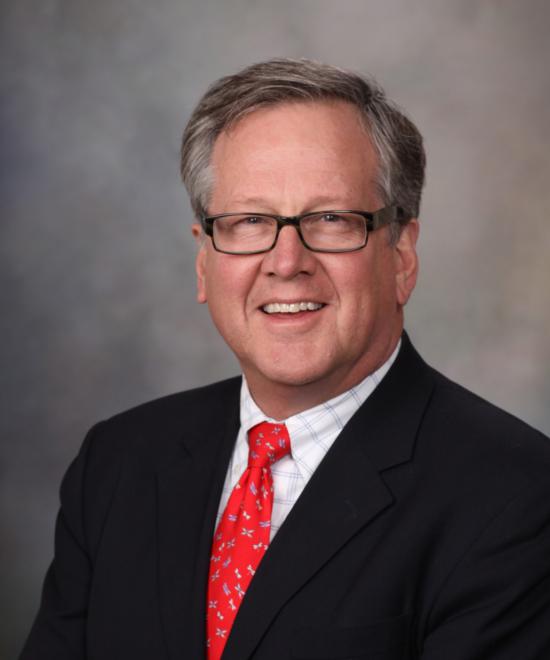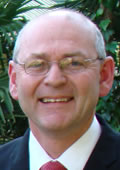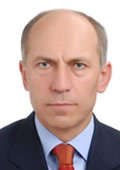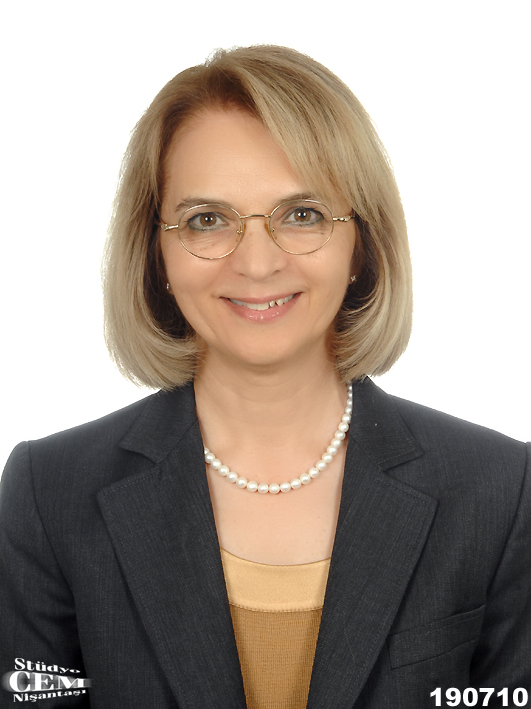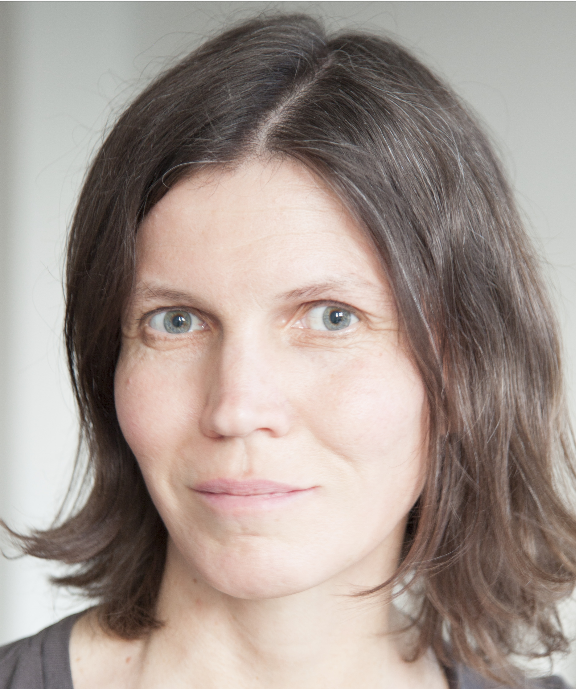INVITED SPEAKERS
|
PROF. DR. MING-KAI CHIN Founder and President, Foundation For Global Community Health (GCH) Prof. Dr. Ming-kai Chin received his Ph.D. in exercise physiology from University of Wisconsin-Madison, USA in 1985. Previously he served as the Head of Sports Science at the Hong Kong Sports Institute; Head and Principal Lecturer, Department of Physical Education and Sports Science at the Hong Kong Institute of Education; and Professor, School of Kinesiology, Allied Health and Human Services, University of Northern Iowa, USA. Currently, he is the Vice President, Global Affairs and Research, HOPSports, Inc., USA. Prof. Chin’s research interests lie in integrated and holistic approaches in the fields of physical activity, sports, exercise science, leisure, health, and technology to promote active living in school and community. An editor of 8 books and author of over 190 publications in scientific and sports journals in English and Chinese, Prof. Chin has offered over 130 keynote and invited presentations, and over 90 conference paper presentations in North America, South America, Africa, Europe and Asia Pacific Region. A Fellow of AIESEP and Research Consortium of SHAPE America, he is one of the four Founders and Former President, Asian Council of Exercise and Sports Science (ACESS) and Editor-in-Chief of the Asian Journal of Exercise, Sports Science & Medicine (AJESSM). Prof. Chin is the Co-editor of the new book “Physical Education and Health: Global Perspectives and Best Practice” in 2014 of which scholars of 40 countries are contributing their chapters on the new direction of physical education and health in their respective country. In April 2015, Prof. Chin was awarded the Medail of Manuel Gomes Tubino by FIEP for his contribution of global work in physical education. In 2015 Prof. Chin has been elected as the Founding President, BRICS Council of Exercise & Sports Science (BRICSCESS) and is the Founder and President, The Foundation For Global Community Health (GCH) in partnership with UN Global Sustainable Index Institute (UNGSII) to promote the 17 Sustainable Development Goals (SDG) to 193 countries. Partnership of The Foundation for Global Community Health (GCH)-UN Global Sustainable Index Institute (UNGSII) : Making a “Possible Difference” in Global Holistic Wellness Including Physical Education and Health? Morbidity and mortality are shown to be increased due to change of sedentary life style including lack of physical activity.The health situation is worse when these factors develop (couch potato children) during childhood. Through 21st century technology mediums, children experience a variety of sensory distractions which enable the repetition of standards-based sport and fitness skill development. Kids may simultaneously watch wellness-themed animated videos, choose modern music, or learn valuable educational and social knowledge for active living through on-line streaming (OLS) while increasing their moderate to vigorous physical activity (MVPA). GCH was founded in 2017 and its mission is “To Improve Community Health and Wellness Worldwide by Promoting Physical, Social and Emotional Health and Safety through Evidenced and Culturally Relevant School-Based Intervention Strategies”. By expanding the model schools concept formulated on CDC’s Whole School Whole Community Whole Child (WSCC) Model, GCH intends to empower children worldwide to become creators, collaborators and contributors to the global network through social media and technology to improve their holistic wellness as a whole person. Illustrations with content demonstrations on the current partnership of GCH and UNGSII to promote the 17 Sustainable Development Goals (SDG) to 193 countries will be presented. Successful cases of implementations of such project conducted by some of the innovative and creative Future Leaders/Volunteers (FLV) will also be discussed. |
|
PROF. DR. STEPHEN L. KOPECKY Professor of Medicine Dr. Stephen Kopecky is a cardiologist at Mayo Clinic. After his training in Internal Medicine and Cardiology at Mayo Clinic, he started in Mayo's Cardiac Catheterization Laboratory doing interventional procedures and in the Coronary Care Unit treating myocardial infarctions. He now focuses on cardiovascular disease prevention were he sees patients in the Mayo Clinic Cardiovascular Health Clinic . He has written numerous articles for peer-reviewed journals and has received multiple "Teacher of the Year" awards from Mayo's Division of Cardiovascular Diseases and the Department of Internal Medicine, most recently awarded the “Internal Medicine Residents Outstanding Teaching Award for Best Lecturer, 2015”. His research interests include the role of lifestyle, including diet, exercise, and proper nutrition play in risk prediction and the development of cardiovascular disease and statin intolerance, especially as it affects patients with familial hypercholesterolemia. He is a contributing editor of the Mayo Clinic’s "Healthy Heart for Life!" book. Dr. Kopecky is the Past President of the American Society for Preventive Cardiology and is the 2013 recipient of the Jan J. Kellermann Memorial Award given by the International Academy of Cardiology for distinguished work in the field of Cardiovascular Disease Prevention. Cardiovascular Health for Children and Community with International Perspective For the first time in the history of the world, between 2000-2010, the primary cause of death was due to non-communicable diseases (NCD), rather than communicable, or infectious, disease. In 2016, it was determined that more people in the world were overweight (BMI >25) then significantly underweight (BMI<18.5). This trend in in NCD’s has been found to be due to 6 primary factors: 1) improper diet 2) insufficient physical activity 3) tobacco 4) obesity 5) excess alcohol 6) stress. It is estimated that approximately 90% of the current chronic diseases (diabetes, coronary artery disease/heart failure, chronic kidney disease, Alzheimer's disease, hypertension, respiratory disease) in the world are preventable. Unfortunately, the roots of these diseases can be traced to childhood. Human predominantly determined their physical activity patterns by age 10, eating patterns in their early teen years, and their salt intake in utero. Lifestyle, including eating patterns and activity levels, early in life, have been shown to correlate with the development of chronic disease in middle age. The current leading cause of death worldwide, cardiovascular disease, is primarily due to inappropriate lifestyle. Healthy lifestyle centers on six key habits: 1) regular, vigorous, physical activity, 2) proper nutrition (eating at least five servings of fruits and/or vegetables a day), 3) no tobacco use or exposure, 4) low incidence of hazardous and harmful drinking/alcohol use, 5) engaging in the practice of positive thinking, and 6) appropriate sleep hygiene. We will discuss how to identify children at risk for the development of early chronic disease and ways to promote world-wide good health on both an individual and community basis. |
|
Prof. Dr. J. HANS DE RIDDER Past President, ISAK Prof. Dr. J. Hans de Ridder is a full professor and director of the School of Biokinetics, Recreation and Sport Science at the North-West University in Potchefstroom, South Africa. He is currently a C2 rated researcher of the National Research Foundation (NRF) of South Africa. His current H-Index is 13. He was the receiver in 2002 of the Stals Award for Human Movement Sciences from the South African Academy for Science and Art for his exceptional contribution to kinanthropometry. In 2011 he was the receiver of the Albert Strating Award for Preventative Medicine, also from the South African Academy for Science and Art. At the age of 39 years, he was one of the youngest recipients of the Stals award and also the first in the history of the School of Biokinetics, Recreation and Sport Science at the North-West University in South Africa. In 2010 he reached a milestone in his research career, when his 50th post graduate student (M’s and Ph.D.’s) graduated. Currently a total of 63 students have completed their masters or doctoral studies under his guidance. He was the author or co-author of a total of 72 research articles published in subsidised academic journals. He is the Assistant Editor of the African Journal for Physical, Health Education, Recreation and Dance (AJPHERD) and also the Senior Vice-President of ISAK. He is a member of the Board of Directors of the GCH Foundation; President, GoFPEP 2014 and the Founder Secretary-General and Vice-President (South Africa) BRICS Council of Exercise and Sport Science. He is married to Elsie and they have three children Elé, De Wet and Maret. Measuring Body Composition in Children – How Can This Help Us to be Better PE Teachers Research indicated that human health is interconnected throughout life, from conception, fetal development, early childhood up to adulthood and old age and that early life even in-utero stage have a profound impact on health and disease in later life. The WHO indicated that Non-Communicable Diseases (NCD) has become the leading cause of death globally- representing approximately 63% of all deaths worldwide in 2013. The increase in childhood overweight and obesity as risk factors associated with NCD’s, has stimulated much interest in identifying accurate ways to assess the body composition of children in school and clinical settings. The negative health consequences of obesity are well documented in the literature and popular media. Over the last two decades, the prevalence of childhood overweight and obesity has increased at an alarming rate in many countries in the world. A major concern is that children who are obese, tend to become obese adults who have a relative high risk of developing diseases and disorders associated with excess body weight and body fatness. The accurate assessment of body composition in children and adolescents, is complicated and challenging. Children are chemically immature and changes in the proportions and densities of the fat-free mass components due to growth and maturation, directly affect the overall density of the fat-free mass. Anthropometric measurements and specifically skinfolds are the most appropriate for use in field settings to determine the body composition of children and adolescents and can be used as markers of adiposity or of fat distribution. Information on the body composition of children, can also be used for the purpose of monitoring changes during growth and development and classifying the levels of body fitness. Therefore, intervention of childhood obesity (prevention and treatment) calls for comprehensive and innovative strategies. Quality physical education must be implemented in schools and offered by well trained PE teachers, because almost all the children can be reached through the school curriculum. Therefore the important role that PE teachers play in the prevention and treatment of childhood overweight and obesity, should never be underestimated. |
|
PROF. DR. GIYASETTIN DEMİRHAN Board of Directors, GCH Prof. Dr. Gıyasettin Demirhan is working at Hacettepe University Faculty of Sport Sciences. He is Head of Physical Education and Sport Teacher Education Department. Also, he is a former president of Turkish Sport Sciences Association. He is a member of some international scientific association like AIESEP, FIEP, ECSS, ISHPES. Currintly his research interests are critical thinking, instructional technology in PE, relationship between physical activity and academic performance and cognitive process, risk perception in outdoor-adventure sports. He published 23 articles in international refereed journals and 44 articles in national referred journals. Also, he has two books and 11 book chapters in physical education and sport pedagogy. He presented more than 100 papers in international and national scientific congresses and completed 12 international and national scientific projects in his own research field. He was as keynote and invited speaker at many national and international scientific meetings. Also, he organized many international and national scientific meetings. He has 128 citations in scientific journals which are indexed in SSCI and SCI and 365 citations in Google Scholar. His WoS “h” index is 12. New Direction of Physical Education and Health in Turkey: Local and Global Approach from Theory to Practice The aim of this presentation is to provide information on the development and changes in Physical Education and Health and Physical Education Teacher Education Processes in Turkey. In addition, local developments and global ones will be compared, and the latest situation in Turkey will be analyzed. The Physical Education activities at schools in Turkey started in the late period of the Ottoman Empire. The activities firstly started in Military Schools, and then spread to a few schools and were then applied. In those years, the German Gymnastics was predominantly adopted at schools. After Selim Sırrı Tarcan went to Sweden and came back to Turkey, the Swedish Gymnastics also started to spread in the country. With the establishment of the Republic of Turkey, Physical Education classes became widespread at schools; however, a detailed educational curriculum was not prepared. In this process, efforts were made to train Physical Education teachers; and the first teacher training instruction was established in 1932. Before this development, class teachers were trained to be Physical Education teachers by providing them with six-month courses. The physical education classes at schools were performed as Solid Order Exercises and as teaching certain skills in early years; and the initiative was left to teachers in practice. A regulation was made for the first time in 1968 with the title of “List of Subjects”; and in 1987, a “Objectives-focused” educational program was prepared. In both preparations, sports branches were taught in classes in an intense manner. For the first time, in 2006, “Health” was also included in Physical Education Curriculum, and in 2010 and 2016, these curricula were improved. Many regulations were made in teacher training processes through time, and universal standards were targeted. When the present Physical Education Classes Curriculum is analyzed it is possible to claim that there is a “Physical Education and Health-Based” program in universal terms; however, there are also important problems in practice. There are similar problems in teacher training processes. In case the “Physical Activity Report Card”, which was accepted as of 2017, is applied in an efficient manner, a global-scale success may be achieved in Physical Education and Health. The key to success is to teach classes in an efficient manner, and to train qualified teachers. |
|
PROF. CARLA ANAUATE Director of CINAPSI – Integrated Center of Neuropsychology and Psychology Prof. Carla Anauate is a Professor of post graduation courses of Neuropsychopedagogy at CENSUPEG University. She is now doing her PHD at Pontificia Universidade Católica – PUC, São Paulo in the area of Health Psychology and Psychossomatics. She received her Master degree in Educational Psychology and Child Development from University of São Paulo – USP in 2008. Prof. Anauate research has focused the neurodevelopment of children with learning disabilities. She has a Center of Developmental Neuropsychology, CINAPSI, which works with all developmental stages of life. She has studied and done internships in Moscow at the Moscow Research Center of Developmental Neuropsychology using Alexander Luria´s principles. This practical work involves habilitation of motor, cognitive and affective skills. Prof. Anauate is post graduated on Neuropsychology, Psychopedagogy, Clinical Social Historical Psychology, Rorschach´s Test and Domestic Violence. She is actually one of the Consultive Presidents of AMEE – Asociación Mundial de Educación Especial and a member of the international executive committee of the International Society of Applied Neuropsychology. Psychological Aspect in Promoting Holistic Health in School and Community The main psychological aspects in promoting holistic health are related to attention, care and love within the relations. It all starts in early childhood when important bonds are built between parents and child. This bond will constitute this baby as a human being who will internalize the world as it is presented to him transforming objectivity into subjectivity. This work is based on the social historical theory founded by Luria,Vygostky and Leontiev, who established that psychology would provide means to acknowledge how a natural process connected to a cultural process can produce the superior mental functions. It uses didactically the principles of mediation and zone of proximal development. Considering that relations are the key for this development of superior mental functions it is important to orientate parents, teachers and community itself so that conditions are provided, with knowledge and conscience, for this development to occur. When you are present in a relation nervous connections are promoted. Results are observed qualitatively focusing that each person is an individual self and that relationships are essential to produce development. Interactions between the brain and the formation of mental functions require the maturity of the nervous system as well as an active process which emphasizes relations of two or more human beings. Therefore the most important is not WHAT TO DO but HOW TO DO. The brain grows better within a stable environment of support and low levels of stress. Affirms that safe relations are the key to healthy growth of the brain as well as emotional regulation that estimulates learning and adaptation to reality. |
|
Assoc. Prof. Dr. Elena CARRILLO ALVAREZ Professor of Sociology and Community Nutrition and Sports Nutrition at the Blanquerna School of Health Science, Universitat Ramon Llull Prof. Dr. Elena Carrillo is a Dietitian-Nutritionist. She is PhD in Education and has performed research around a variety of topics mainly related to how socio-educational features can leverage health and educational inequalities. More specifically, he develops her research around healthy eating and youth obesity prevention using an ecological approach, and around educational governance networks, that connect social, health and educational organizations and empower communities to succeed in front of today’s comprehensive challenges. She has been domain coordinator for the development of reference budgets for the food basket in a EU funded project involving institutions from the 28 member state countries. She is an associate professor at the FCS Blanquerna, teaching Sociology and Community Nutrition and Sports Nutrition. She has obtained several grants and recognition to her work, including grants from the Spanish Government, awards to several presentations made in international conferences and to the development of teaching material to promote healthy eating habits in teenagers. She is a Visiting Scholar at the Harvard School of Public Health. She is Team Leader of the Future Leader Volunteer Program at the Global Community Health Foundation. The social construction of the body in modern societies and its influence in Health Promotion Practices: the cases of Physical Education and Healthy Eating Sociologists such as Mauss (1973), Baudrillard (1974), Bourdieu (1988), Douglas (1988) and Turner (1994), among others, have discussed how current conceptions and experiences about the body have been historically and anthropologically shaped, and how our relations with the body mirror social structures and cultural issues. An interesting differentiation is that of physical and social body, and according to Douglas, the social body confines the way in which the physical body is perceived. In other words, it entails that the expression of the physical body is constrained and restricted by the social situations it sustains. In current modern societies, the body is a further object of consumption that pursue longevity, anti-ageing and specific shapes and configurations of the body as a sign of social position and prestige. In this paper, we apply the previous approaches to the analysis of Health Promotion Practices, focusing on the cases of Physical Education and Healthy Eating institutional guidelines in different countries, with the aim of discussing the implications of these perspectives in a selection of lifestyle and health indicators. Last, we will elaborate on how analyzing these aspects and moving through a more inner experience of the body, focused on the physical body rather than on the social body, can transform physical education and healthy eating promotion practices. |
|
Prof. Dr. Serap Inal Prof. Dr. Serap Inal is a full professor and heading the Department of Physiotherapy and Rehabilitation and was the previous head of the School of Physical Education and Sports in Istanbul University where The APA Certificate Program was also structured during her time. She thought physical (motor) disabilities in European University Diploma in Adapted Physical Activity (EUDAPA) in Vierumäkue, Finland through Erasmus Program in 2010-2016. She is a member of ICHPER-SD, IFAPA, Turkish Neuromuscular Disorders Society and Turkish Physical Therapy Association. She has three books written in native language in the areas of sports biomechanics, upper extremity prosthesis, orthotics in neuromuscular disorders and four chapters internationally on geriatric rehabilitation, physical features of athletes with intellectual and physical disabilities, proprioceptive assessment and APA education. Current Research of Inclusive Physical Education and Sports in Turkey and International Perspective In the last two decades, the inclusive physical education and sports became an important topic in Turkey. However, there were no physical education (PE) provisions for students with disabilities till the late 90’s. Children were usually given medical dismissal from PE classes, or they remained sitting and watching their friends during the PE (Mauerberg-decastro et al, 2016). Children with physical, visual, auditory disabilities or with mild intellectual disabilities and autism were all encouraged to join regular primary schools in their districts where they also practice inclusive physical education and different types of sports. Although, Turkey singed The United Nation Convention on Rights of Persons with Disabilities (2006) in 2009, and committed to overcome the accessibility problems, children with physical disabilities may still face barriers for accessibility in regular schools. This is unfortunately similar for the sports complexes and recreation areas that should be studied on. The increasing number of post-graduate studies since late 90’s in inclusive PE is very promising for the future of this area in Turkey, not only for the effects of the outcomes of the scientific studies, but also for the recognition and dissemination of inclusive physical education among people with or without disabilities. The organized scientific meetings as the 19th Symposium of Adapted Physical Activity in Istanbul in 2013, and The National Congresses on Adapted Physical Education organized regularly in different cities of Anatolia every in three years starting from 2011, may be considered as the indicators of the interest on inclusive PE in the country. There is also a quarterly on-line bulletin that gathers information on inclusive PE as a part the bulletin of the International Federation of Adapted Physical Activity (IFAPA) to achieve a similar understanding and scientific approach. |
|
Prof. Dr. Anja KRAUS Department of Education Prof. Dr. Anja Kraus is a professor of post graduation courses of Educational Sciences at Linneaus University, Växjö/Sweden. She is now doing her habilitation at the University of Education Heidelberg/Germany in the area of pedagogical knowledge and science theory. She received her Ph.D. in educational sciences and philosophy at the Free University Berlin in 2000 and has been a professor at the University of Education Ludwigsburg/Germany from 2004 - 2013. Prof. Kraus´ research covers pedagogical theories of learning, tacit knowledge, corporeality and heterogeneity in schools, integration of approaches in Liberal Arts into didactical concepts and into empirical classroom research, as well as anthropological questions. She founded and drives the international scientific network on Tacit Dimensions of Pedagogy (https://tacitdimensions.wordpress.com). Tacit Dimensions of Pedagogy – Corporeality and Bildung Actual pedagogy refers to the kind of theoretical and empirical research which reduces pedagogical theory and practice to certain norms and to definite interventions in well-defined pedagogical situations. Accordingly, the main aim of school is to impart available knowledge and well-defined abilities directly oriented at certain objectives. In this regard, pedagogy and pedagogically intended knowledge and abilities are interpreted as psychometric competences that can be easily measured. By focusing mainly the tacit side of education practices, we follow up a paradigm shift in pedagogy, the “tacit turn”. The fundamental consideration is then, that, beside explicit, declarative forms of knowledge, tacit forms of knowledge play a central role for our learning successes and well-being. Harry Collins (2012) distinguishes relational tacit knowledge, somatic tacit knowledge and collective tacit knowledge. Considering somatic tacit knowledge, school appears as broad spectrum of bodily expression, attention processes, and knowing that goes far beyond a pure discipline and instrumentalizing of human bodies. Klaus Mollenhauer refers education as such (Bildung) to our corporeality. My presentation gives an overview over the topic of corporeality at school as tacit dimension of teaching and learning. I will use the example of playing an acoustic instrument as a highly embodied and material relationship between the body and the instrument, where years of experience concerning e.g. intonation and rhythm are based on and constitute a tacit knowing of what is right. By focusing the teacher-student relationship, (1) knowledge shows as practice, (2) corporeality unfolds ingenuity, (3) learning can be approached by mirroring, and (4) matching with a situation at hand turns out as most striking quality criterion for knowledgeable practices. |


